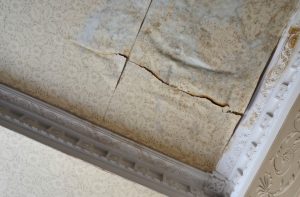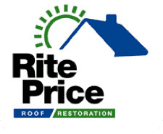
Whether your roof is covered in traditional asphalt shingles or something fancier like terracotta roof tiles, leaks can occur in any roof that has been improperly installed, has sustained damage from the elements, or has simply gone too long without any sort of restoration.
The biggest factor that will determine how much trouble a leak causes comes from your immediate response. So aside from getting a professional restoration, here are 4 other things you must do right away once you discover that you have a leaking roof.
Take Action to Minimize Interior Damage caused by leaking roof to Your Home.
The moment you detect a leak somewhere in your roof, the first thing you should do is take steps to minimise the damage to the interior of your home.
The first step is to set out containers to collect the water wherever it’s dripping from the ceiling. If there are leaks in rooms where you have carpet installed, make sure that the containers you set out are placed atop a flat surface so that they don’t tip over.
Next, you’ll want to remove any valuable items or furniture from below the leaking areas to make sure they don’t get wet if the leaking starts to spread. An alternative to this for larger pieces of furniture is to cover the furniture in plastic tarps or anything waterproof that can repel the dripping water.
Having the interior of your home protected as best as you can will give you one less thing to worry about as you try to deal with the leak itself.
Fully Survey Your Entire Roof Both on the Outside and Inside To Avoid Leaking Roof
Once you’ve protected your living spaces from the dripping water, the next step is to complete a full assessment of the state of your roof both on the outside and on the inside. By doing this you should be able to mitigate the chances of the leak getting any worse and perhaps even reduce or stop the leak altogether.
From the outside, check to make sure that the entire surface area of your roof is covered with shingles and that the underlying material hasn’t been exposed to the raw elements. Any problem areas that you do come across in this regard will have to be filled in as soon as possible.
Another helpful way to identify how the water is entering into your roof is to go inside the roof from either the attic or crawlspace beneath and try to locate the exact area where water is getting past the outer protective layers of the roof itself. Depending on what you find, the entry point may be something you can fix yourself, or it may require professional restoration.
Prevent Water from Collecting on Your Roof by Clearing All Gutters to Avoid Leaking Roof
Another preventative measure to take that will help your situation is to clear away any blockages within your gutters, including all the downspouts.
One way in which leaks can develop is from pools of rainwater that collect and sit around your roof from backed up gutters, thus creating a state of constant saturation that may eventually lead to the weakening of certain materials or the deterioration of existing problem areas around your roof.
By clearing your gutters and downspouts, you’ll be ensuring that the flow of water from the roof remains constant and that none is able to collect in one spot for any period of time. This is especially critical during any periods of intense rainfall that could immediately add to the severity of an already present leak.
Search for Long Term Damage Within Your Roof to Avoid Leaking Roof
When it comes to most roof leaks, there exists a significant span of time in which water damage may be occurring across the interior before you actually spot the first signs of leakage from your ceiling, so it’s important to seek out and identify those hidden pockets of damage. The sooner you’re able to find them the sooner you’ll be able to have them corrected.
Signs of water damage to look for that in most cases will require immediate repair include wet stains across your roof’s under-layer, significant discolouration of panelling, strong smells/odours, bulging/warping/cracking of wood, and any peeling of paint. All of these represent the hidden side effects of any leaking roof and may vary in severity depending upon how long the leak itself has gone unchecked.
A professional restoration is the one sure-fire way to correct the problems of any leaking roof. Even before taking this step, however, there are some things you should do as soon as you detect any water dripping from your ceiling.
All of these steps will significantly reduce the impact of a leak on your home and should help ensure that there are no surprises when you do decide to call in the professionals.
By now it’s a commonly known fact that asbestos, once thought to be a great asset when constructing buildings, is actually a carcinogen and very harmful to the health of those who come in to contact with it.
Some houses that were built prior to this discovery can in particular contain asbestos in roof, and require roof restoration to be made safe and liveable. Asbestos is a naturally occurring mineral that consists of many small fibres, and was also used at one time to construct household items.
Do you have reason to believe there is asbestos in your roof because of the age or material of your house? If you do, read below for some helpful suggestions on what course of action to take next.
Stay Calm and Stay Away from the Asbestos
Many experts believe that if the asbestos is in good condition it poses no harm to human health. It is actually the breathing of asbestos dust that is dangerous. Cutting, drilling or really even just moving asbestos is what causes the fibres to break down and find themselves in the airways of humans. So, first things first, don’t touch the asbestos, and stay calm.
Find a Professional Remover
Asbestos needs to be sprayed before it can safely be removed, because of the high toxicity of the fibres. Make sure you contract a professional to take care of this task for you.
The contractor must be a licensed professional who has been trained to safely remove asbestos. They will have certain procedures and the appropriate tools to make sure that the fibres of the asbestos don’t harm them or your family in the future.
Arrange for Safe Disposal of Asbestos Materials
Often the task of safely disposing of the materials that are contaminated will fall to the contractor that you hire to restore your roof to a condition that is healthy for you and your family.
However, there may be an instance where you need to do this yourself. Do not throw asbestos in your regular household garbage, as this poses a risk for everyone who will encounter it as it goes down the chain of waste management. Instead, take the asbestos to a safe collection facility.
If you believe you may have asbestos in your roof, remember to stay calm and not to touch or tinker with the materials you suspect are contaminated. It’s particularly important to avoid tampering with asbestos because you don’t want to disturb any of the materials.
Instead, calmly call a licensed professional who has experience in asbestos removal. This person will be able to assess your situation and will be the best guide for helping you plot a course moving forward. They will be able to remove the asbestos safely without putting anyone at risk.
Ensure that they have a solid plan for completely disposing of the contaminated materials, or if this task falls to you, be sure to protect yourself as you do this.

